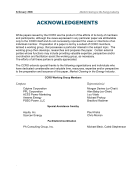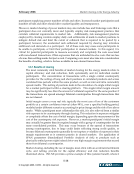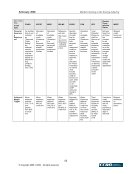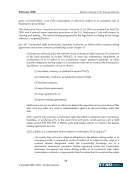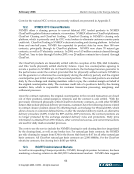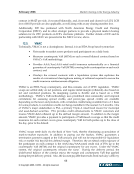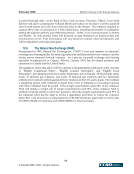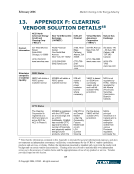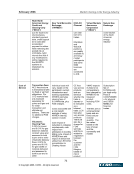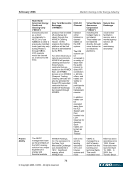February 2006 Market Clearing in the Energy Industry 5-23 © Copyright 2006, CCRO. All rights reserved. rather considers both qualitative and quantitative factors (though rating agencies information may be used as part of this analysis). Similarly, SPP, like MISO, has proposed not relying on rating agencies, but uses a scoring model. Most ISO/RTOs have determined that a one size fits all model does not appropriately address all members’ business strategies and financial risk profiles. Thus, development and use of multiple types of credit scoring models within and among ISO/RTOs has occurred and continues to mature. In general, different scoring models may be employed for public and non-public entities and, in some instances, further broken down by groupings such as Generators/Merchants, Providers of Last Resort, Power Marketers, Municipals- Cooperatives-Other Public Power, Load Serving Entities, End Users/Self Generators, and Transmission Service Only members. 5.1.6. POLR obligations Many LSEs (load serving entities) and POLR (providers of last resort) suppliers currently see little direct benefit from accelerated settlement, clearing, or cross commodity netting since they generally settle with their suppliers on a monthly basis and thus would need to finance at least the initial settlement acceleration, but might not be able to recoup their costs through their rate base recovery processes. Of course, accelerated settlement does tend to reduce the magnitude of the impact of a potential default faced by LSEs and POLR suppliers, which then reduces the mutualized impact of the cost of that default otherwise born by retail customers. LSEs and POLR providers with lower credit ratings could also benefit from accelerated settlement through the resulting reduction in collateral required at the ISO/RTO. In the case of LSEs financial or operational default in servicing its assigned load, the load would revert back to the default service provider, which would need to address the on-going incremental risk to its portfolio as serviced through an ISO/RTO. 5.1.7. Implications of data quality Because each ISO/RTO maintains significant and very unique settlement systems and credit exposure processes and methodologies, it is a challenge to provide clearing platform(s) with daily data in order to provide timely information to effect daily settlement consistent with other financial institutions currently employing daily settlement. Real time or daily settlement data is necessary to operate an efficient clearing mechanism particularly if cross-ISO/RTO exposure netting is to be addressed. Most ISO/RTOs accommodate daily exposure analysis by using projections or estimates of transactions ranging from a day or two to up to 17 days of market activity. 5.1.8. Legal and regulatory issues There are numerous legal and regulatory issues that need to be addressed in order to implement a clearing solution in the ISO/RTO environment, especially with respect to bankruptcy law, the influence of US District and Appellate courts compared with the jurisdictional oversight of the FERC, and state regulators.
Purchased by unknown, nofirst nolast From: CCRO Library (library.ccro.org)


